
Interview with Thomas Burlon
from Berlin office Brandlhuber+ Emde, Burlon
After a summer break, KRUH returns with the lecture series "Another Perspective", which will present six architectural practices from all over Europe. With the upcoming lecture of Brandlhuber+ Emde, Burlon, we were able to ask a few questions to Berlin architect Thomas Burlon.
Your office is based in Berlin, the most cosmopolitan city in whole Germany. But architecture remains very rational and cold looking. Your office is, of course, the exception. How is this consistency caused? Maybe this strict rules could help the same way as Manhattan grid.
After the wall came down for Berlin there was the question which reference to use for the urban plot. The GDR had just gone, Modernism was in a crisis. So the government - especially in the era of former building senator Hans Stimmann - focused on the Wilhelminian period, which then meant traditional blocks, certain eaves height, facades prefered in natural stone etc.
Concerning the german situation in general its through that we have an enormous regulation of standards and building requirements. We try to play with these rules. But of course its getting more and more difficult to interpret them. But to be honest I think it was always like that. 2) You have study experience from Dresden and Aachen. You worked in Cologne and Berlin. Could it be said that there is currently a common theme for German architecture?
As our work generates a lot of interest I think there are some topics - I don't know if common - that seem to be relevant. How to lower standards? How to reduce costs? (This question corresponds with the first one.) Stop of the tear-down-and-build-new practice! We have to deal with existing structures be they 100 or 10 years old. Architecture is not a disposable product!
Your Berlin studio is mainly involved in the reconstruction of common old buildings (not historical monuments), but you are approaching in a very unconventional way. You discover new uses of existing objects in an unexpected way. Is there a targeted effort for controversy?
All the projects you talk about (Gallery and Ateliers Brunnenstrasse, Antivilla, St. Agnes, Rachel) happened on sites that were totally uninteresting for typical investors. The only strategy was to tear down the existing and start a new project. There are always two arguments. Existing structures cost too much money to develop and its too complex to converse to a current standard. I think our projects have shown that its possible and that both arguments are irrelevant.
In addition to renovating houses, you are also focusing on resuscitation of the reputation of concrete and plastic. How do people generally accept it? Do you observe a growing audience?
Its through that we like to work with concrete though its not a purpose. Concrete is interesting for us because it can have every form. Concrete is also variable recipe, colour and surface. For sure we are not working on a better reputation for concrete and none at all for plastic. Our interest is more related to the space and not the material.
Concrete often associates with the brutality of the 1960s or the blocks of the 70s and 80s. One icon of brutal architecture has been refurbished by Your office. How do you perceive the work of Werner Düttman and how people accept the church of St. Agnes after reconstruction?
Meanwhile architecture of the 1950s faces a better reputation amongst people. The 1960s and later do not. In this context Werner Düttmann is a very interesting person. He was running his private practice but also serving the public as building senator. In there 2012 exhibition 'Architecture by Civil Servants' OMA was investigating in that topic and Düttmanns work was part of the exhibition. There was a better understanding for each other (public and private) at that time. Concerning the conversion of St. Agnes we tried to keep the public sphere it once had. The feedback is very positive just for the simple fact that its used again.
Your next topic is cheap construction, when one does not need to spend all money for flat or house. On one side its about material compromises but on the other Your way of working uncompromising.
We try to lower the building costs. If a building costs fewer money owner or user keep there financial freedom to run interesting projects themselves. If you have to work for the rent or your credit then your forced to earn money just for that. For example the gallery space at Brunnenstrasse is rent by two young gallerists - kow - which wouldn't have been possible for them if the building wouldn't have been that low-priced.
I had the opportunity to attend the Arno Brandlhuber lecture in Bratislava in May this year, where he presented a 35-minute film by Uli Edel, documenting the role of video in the perception of architecture. Thanks to the media, you can create a hero almost from anyone and anything. How do you look at this medium? You also often use it.
Architecture is very much about the object. The office also starts with these objects for example the Neanderthal museum. Its not made out of context or content its just standing there. The medium film can overcome this objectuality. The author of the film is always telling stories, stories of the past and of the future so its more than ‘just’ architecture.
Currently you're dealing with the "Legislating architecture" which is also affecting politics. It's possible briefly explain your effort?
The idea behind ‘legislating architecture’ is to show that we as architects can ‘play’ with building codes. Good examples are the projects ‘2,56m’, ‘Rachel’ or ‘Brunnenstrasse’. By creating these case studies they allow to show what is possible and by this we have possibility to enter the legislating process and shape laws. It’s a little bit the topic of ‘civil servants’ also. The architect can or should serve the public though or by running his private practice.
Thank you for answers and I look forward to seeing you at the Prague lecture.
After the wall came down for Berlin there was the question which reference to use for the urban plot. The GDR had just gone, Modernism was in a crisis. So the government - especially in the era of former building senator Hans Stimmann - focused on the Wilhelminian period, which then meant traditional blocks, certain eaves height, facades prefered in natural stone etc.
Concerning the german situation in general its through that we have an enormous regulation of standards and building requirements. We try to play with these rules. But of course its getting more and more difficult to interpret them. But to be honest I think it was always like that. 2) You have study experience from Dresden and Aachen. You worked in Cologne and Berlin. Could it be said that there is currently a common theme for German architecture?
As our work generates a lot of interest I think there are some topics - I don't know if common - that seem to be relevant. How to lower standards? How to reduce costs? (This question corresponds with the first one.) Stop of the tear-down-and-build-new practice! We have to deal with existing structures be they 100 or 10 years old. Architecture is not a disposable product!
Your Berlin studio is mainly involved in the reconstruction of common old buildings (not historical monuments), but you are approaching in a very unconventional way. You discover new uses of existing objects in an unexpected way. Is there a targeted effort for controversy?
All the projects you talk about (Gallery and Ateliers Brunnenstrasse, Antivilla, St. Agnes, Rachel) happened on sites that were totally uninteresting for typical investors. The only strategy was to tear down the existing and start a new project. There are always two arguments. Existing structures cost too much money to develop and its too complex to converse to a current standard. I think our projects have shown that its possible and that both arguments are irrelevant.
In addition to renovating houses, you are also focusing on resuscitation of the reputation of concrete and plastic. How do people generally accept it? Do you observe a growing audience?
Its through that we like to work with concrete though its not a purpose. Concrete is interesting for us because it can have every form. Concrete is also variable recipe, colour and surface. For sure we are not working on a better reputation for concrete and none at all for plastic. Our interest is more related to the space and not the material.
Concrete often associates with the brutality of the 1960s or the blocks of the 70s and 80s. One icon of brutal architecture has been refurbished by Your office. How do you perceive the work of Werner Düttman and how people accept the church of St. Agnes after reconstruction?
Meanwhile architecture of the 1950s faces a better reputation amongst people. The 1960s and later do not. In this context Werner Düttmann is a very interesting person. He was running his private practice but also serving the public as building senator. In there 2012 exhibition 'Architecture by Civil Servants' OMA was investigating in that topic and Düttmanns work was part of the exhibition. There was a better understanding for each other (public and private) at that time. Concerning the conversion of St. Agnes we tried to keep the public sphere it once had. The feedback is very positive just for the simple fact that its used again.
Your next topic is cheap construction, when one does not need to spend all money for flat or house. On one side its about material compromises but on the other Your way of working uncompromising.
We try to lower the building costs. If a building costs fewer money owner or user keep there financial freedom to run interesting projects themselves. If you have to work for the rent or your credit then your forced to earn money just for that. For example the gallery space at Brunnenstrasse is rent by two young gallerists - kow - which wouldn't have been possible for them if the building wouldn't have been that low-priced.
I had the opportunity to attend the Arno Brandlhuber lecture in Bratislava in May this year, where he presented a 35-minute film by Uli Edel, documenting the role of video in the perception of architecture. Thanks to the media, you can create a hero almost from anyone and anything. How do you look at this medium? You also often use it.
Architecture is very much about the object. The office also starts with these objects for example the Neanderthal museum. Its not made out of context or content its just standing there. The medium film can overcome this objectuality. The author of the film is always telling stories, stories of the past and of the future so its more than ‘just’ architecture.
Currently you're dealing with the "Legislating architecture" which is also affecting politics. It's possible briefly explain your effort?
The idea behind ‘legislating architecture’ is to show that we as architects can ‘play’ with building codes. Good examples are the projects ‘2,56m’, ‘Rachel’ or ‘Brunnenstrasse’. By creating these case studies they allow to show what is possible and by this we have possibility to enter the legislating process and shape laws. It’s a little bit the topic of ‘civil servants’ also. The architect can or should serve the public though or by running his private practice.
Thank you for answers and I look forward to seeing you at the Prague lecture.
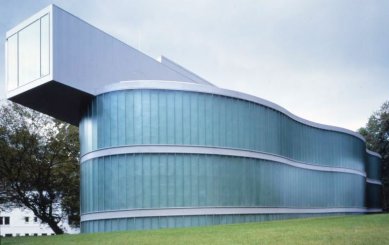
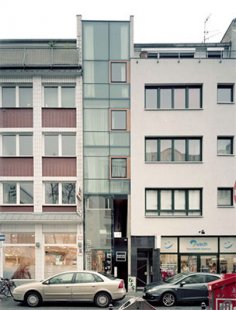
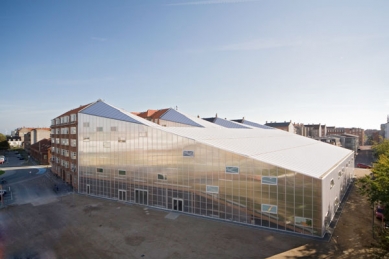
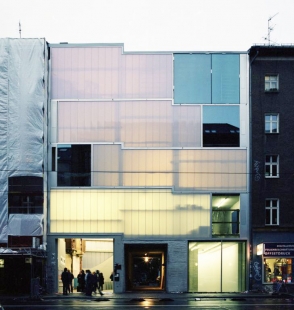
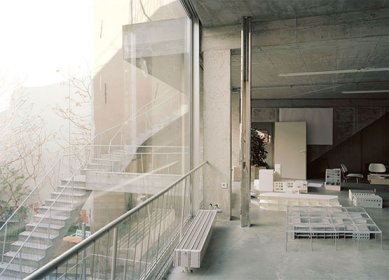
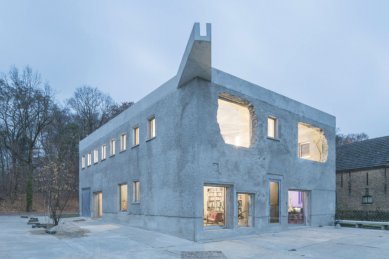
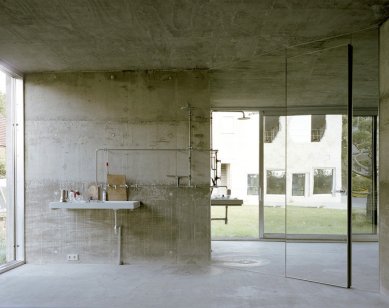
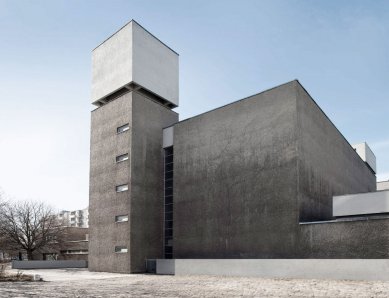
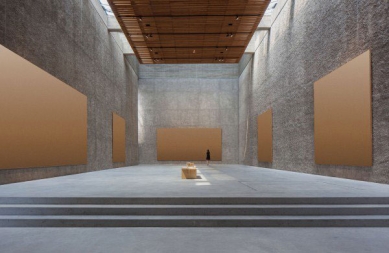
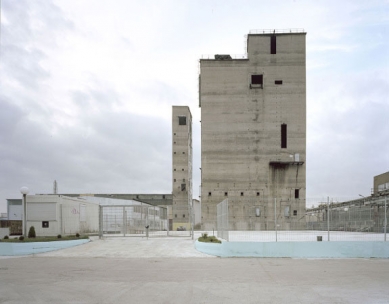
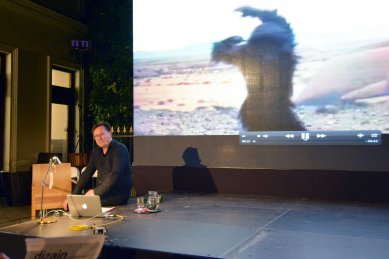
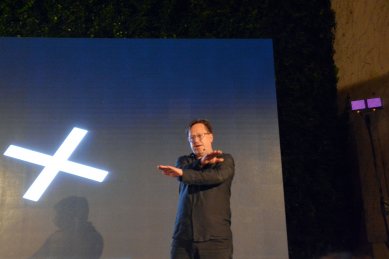
0 comments
add comment











